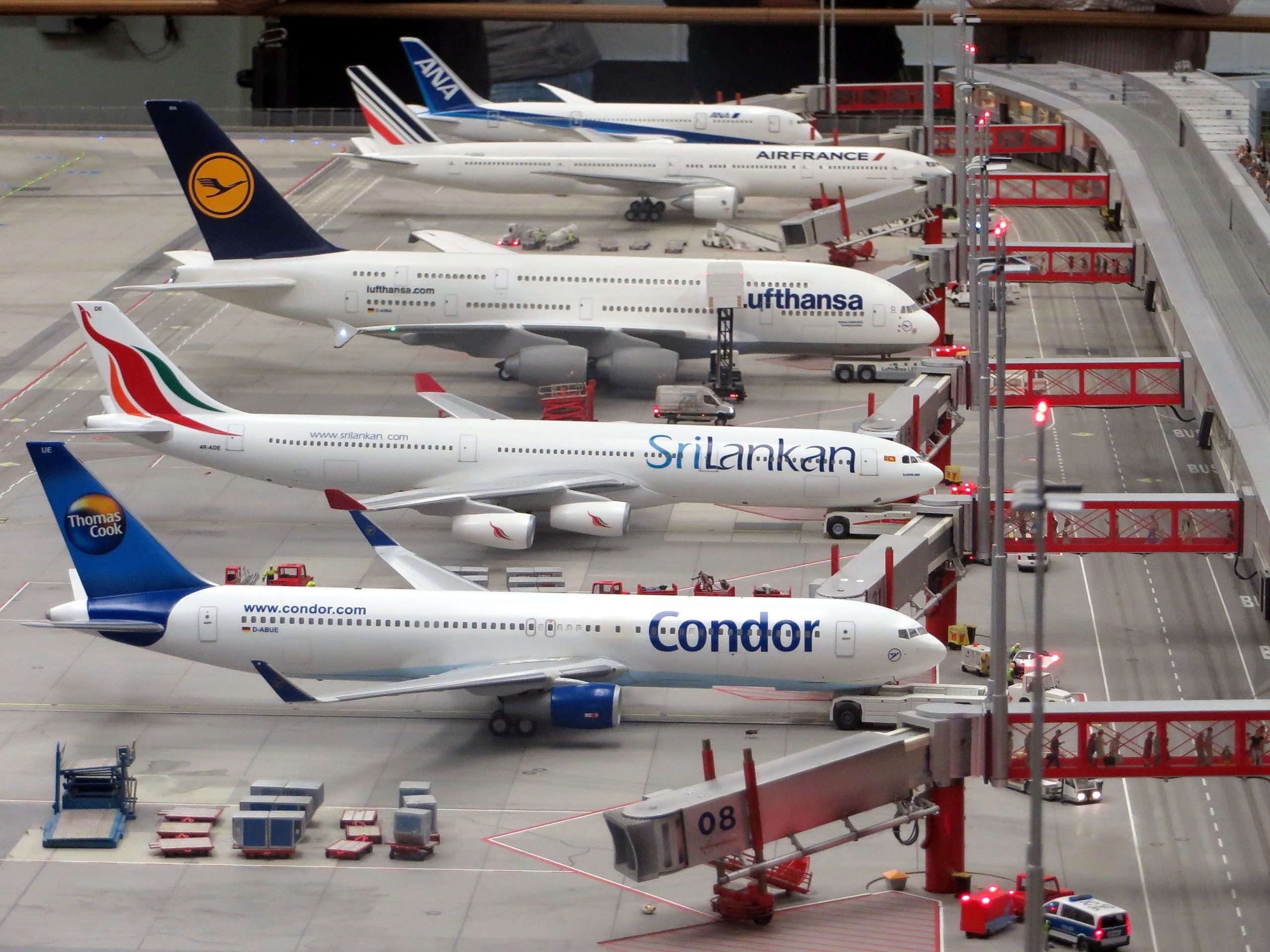
Traveling can be an exciting and enriching experience, but it can also put a dent in our wallets. That’s where travel hacks come into play, helping us find creative ways to save money while exploring the world. One such travel hack is skiplagging, a technique that savvy travelers have been using to score significant discounts on airfare. Infact, Hopdes team itself has tried it out several times, and we really found it as one of the best travel hacks!
What is Skiplagging?

In easiest terms, skiplagging means you book a flight ticket with the intention of disembarking at a layover destination instead of the final destination.
Let’s say you’re planning a trip from Los Angeles to New York. When you search for a direct ticket, it’s priced at $280. Now, here’s where skiplagging comes in. If you search for a flight from Los Angeles to Michigan, you might find a flight that has a layover in New York before continuing to Michigan. Surprisingly, this flight with the layover could be priced lower, let’s say around $200.
What you can do is book this flight, but instead of continuing to Michigan, simply disembark in New York and don’t catch the connecting flight. By doing this, you’ve cleverly saved yourself $80 on your airfare!
How Does Skiplagging Work?
Many ponder as to how it can happen that connecting flights are cheaper than direct flights. Skiplagging mainly works because of the loopholes within the ticketing system of airlines, as discussed below.
Pricing Discrepancies
Airlines use complex algorithms to determine ticket prices, considering factors such as demand, competition, and popularity of specific routes. As a result, flights with layovers at certain destinations may have lower fares compared to direct flights to those same destinations. This discrepancy arises due to the airline’s pricing strategies and market dynamics. Hidden-city ticketing or skiplagging becomes possible due to this.
For example, The LAX to JFK route is highly sought after so airlines can command higher prices for direct flights. However, if there is less demand for flights from LAX to DTW, which includes a layover in JFK, airlines may offer lower fares for this route to attract more passengers. As a result, someone who wants to head to JFK can simply opt for the second option as it’s cheaper!
Hub-and-Spoke Model

Many airlines operate on a hub-and-spoke model. This means that they have major airports (hubs) where they consolidate flights from various origins (spokes) before continuing to other destinations. These hub airports often have more frequent flights and more competition resulting in lower fares. By skiplagging, one takes advantage of this by booking a flight that has a layover at a hub airport, allowing travelers to save money compared to booking a direct flight to the hub.
Yield Management
Airlines practice yield management, which involves adjusting ticket prices based on demand and maximizing revenue. They aim to fill each flight with a mix of passengers who paid different fares. Skiplagging disrupts this pricing model by booking a flight to a layover destination with a lower fare even though the airline may have priced the ticket with the intention of generating higher revenue from passengers traveling to the final destination.
Avoiding Premium Routes

Some routes are more expensive due to high demand or limited competition. Skiplagging can help bypass these premium routes by booking a flight to a layover destination on a different route, which may have lower fares. Travelers can then disembark at the layover point effectively avoiding the higher-priced portion of the journey.
For example, a direct flight between LAX and JFK might just have a single seat left which is why the price could be high for this. However, flight prices for LAX → JFK → DTW might be still cheap since this “route” might not have that much demand. A smart traveler can simply make use of this by going for the second option!
Is Skiplagging Legal?
Let’s say you booked a flight from LAX → DTW with a layover at JFK. During your layover, you got sick, and had to cancel your upcoming flight. Can an airline sue you for this? The answer is No, they cannot.
Skiplagging is exactly like that, except for the fact that it is intentional. However, for long, the debate has been going on and airlines have tried to monitor the aspect of Skiplagging but haven’t been able to really sort it out. Skiplagging presents a significant challenge for airlines as it results in the loss of potential revenue from an unused seat that could have been sold to another passenger.
Moreover, airlines employ sophisticated algorithms to optimize pricing, seat availability, and overall revenue generation. Skiplagging undermines these efforts as it involves intentionally bypassing portions of the journey, which can lead to inefficiencies in seat utilization and revenue optimization.
Recently, a valued American Airlines customer found themselves in a similar situation. Upon returning from a trip, they were faced with a choice: pay $1000 USD to resolve the matter and maintain their Platinum benefits and AAdvantage points balance, or risk having their Platinum benefits rescinded and losing a significant amount of AAdvantage points.
This serves as an example of how airlines are taking stronger measures to deter hidden-city ticketing.
Other measures that airlines can take to counter skiplagging include
- Cancellation of Return Flights: In some cases, if a passenger skips a segment of their itinerary, the airline may cancel subsequent flights, including return flights, as per the terms and conditions.
- Denial of Boarding: If an airline becomes aware of skiplagging before a passenger’s flight, they may deny boarding or require the passenger to pay additional fees to continue the journey.
Editor’s Pick: How to Keep AirPods From Falling Out When Traveling?
How to Get Away With Skiplagging? Insider Tips

To mitigate the risks associated with skiplagging and reduce the likelihood of facing problems, we recommend considering the following strategies:
- Change Airlines: Airlines may scrutinize passengers who exhibit consistent skiplagging patterns, such as frequently booking certain routes with layovers and repeatedly not completing the final leg of the journey. Changing airlines for each trip can help minimize the risk of accumulating a consistent record of skiplagging with a particular carrier. By diversifying your choice of airlines, it becomes more challenging for airlines to track your skiplagging history, making detection and potential consequences less likely.
- Exercise Caution: While skiplagging can be an enticing cost-saving strategy, it is advisable to avoid engaging in it too frequently or consistently. By occasionally refraining from skiplagging, you can reduce the chances of being identified as a consistent skiplagger and mitigate potential consequences.
Types of Skiplagging
Skiplagging has numerous types, and you can utilize this information to plan for your next trip cheaply!
Hidden-City Ticketing
Your final destination may be a “hidden-city” in a layover flight! Hidden-city ticketing involves booking a flight with a layover at your desired destination and intentionally not taking the connecting flight to the final destination. This strategy allows you to save money by taking advantage of lower fares for flights with layovers. This is the most used strategy of skiplagging.
Throwaway Ticketing

Throwaway ticketing involves booking a round-trip flight and only using the outbound leg of the journey. This travel hack can be incredibly beneficial when the cost of a round-trip ticket turns out to be cheaper than a one-way ticket to your desired destination. It may sound counterintuitive, but there are cases where the cost of a round-trip ticket can be cheaper than a one-way ticket to your desired destination.
Here’s how it works: Imagine you want to travel from New York to Paris. When you search for one-way tickets, the prices might be quite high. However, when you explore round-trip options, you find a round-trip ticket from New York to Paris and back for a surprisingly lower price than a one-way ticket alone.
One reason why a round-trip ticket can be cheaper than a one-way ticket is the difference in airline carriers. In some cases, you may find that booking a one-way flight with a particular airline, such as American Airlines, is more expensive compared to booking a round-trip ticket where the return journey is operated by a different airline, like Spirit Airlines, which offers significantly lower fares.
Split Ticketing

Split ticketing refers to breaking a journey into separate legs and booking them as individual flights. This can help you find lower fares for each leg of the trip and potentially save money.
Let’s dive into an example: You secure a flight from Chicago to Barcelona with a layover in Rome, and it turns out to be cheaper compared to a direct flight from Chicago to Rome. Then, you go ahead and book a separate ticket from Barcelona to Rome, which you find at a more affordable price. By combining these two flights, you can reach your desired destination while taking advantage of the lower fares available for each leg of the journey.
By being a bit more adventurous and breaking your journey into separate flights, you have the opportunity to explore more flight options and snag those enticing lower fares.
It’s important to keep in mind that when employing the split ticketing strategy, you should consider factors such as layover durations, potential differences in airlines, and the need to collect and recheck baggage, if applicable. It requires a bit more planning and coordination, but the potential savings can make it all worthwhile.
Open-Jaw Itineraries

An open-jaw itinerary allows you to fly into one city and depart from another, without the need to return to the place where you started. An open-jaw itinerary can sometimes lead to finding cheaper flights. Airlines price tickets based on demand, competition, and other factors. By choosing an open-jaw itinerary, you open up the possibility of searching for flight options that may offer better fares compared to traditional round-trip or one-way tickets.
For example, flying into London and departing from Berlin might prove to be more cost-effective than flying round-trip to London.
It’s important to note that open-jaw itineraries may not be suitable for travelers seeking maximum convenience and a straightforward journey. However, if you’re someone who loves to embrace the spirit of adventure and wants to save costs while exploring multiple destinations, open-jaw itineraries can be an excellent choice.
How Can You Skiplag?
Now that you are aware of different types of skiplagging strategies, it’s best to learn how you can actually do it.
- The Easy Way: Simply comment down your travel details below and let Hopdes team do the rest! We’ll try our best to find you some awesome deals for your flight making sure that you save big bucks by skiplagging. Be sure to leave your email address and we will get back to you within 48 hours.
However, if you want to search on your own, here are few ways to do so
- Use Online Travel Agencies: Utilize popular OTAs such as Expedia, Kayak, Skyscanner, or Google Flights. skiplagged.com is also a website you must visit as it especially shows you layover flights. These platforms allow you to search for flights with various filters and options. You can input your origin, destination, and desired travel dates, and explore different flight itineraries that include layovers at your desired destinations.
- Manually Search: Conduct multiple searches with different combinations of origin, destination, and layover cities to see if any cost-effective options surface. Remember to consider both one-way and round-trip ticket prices, as well as open-jaw itineraries. This would require a lot of your time, but you will not be dissatisfied, especially after trial and error.
- Avoid High Demand Routes: From wherever you are searching, just be sure that you are avoiding premium routes.One way to identify the priciest routes is to perform a Google search using keywords like “Most demanded air routes to [your desired destination].” This search can help you uncover popular and expensive routes. When searching for flights, make a conscious effort to skip those high-demand routes that you identified
Suggested Reading: How to Use Google Flights to Find Cheap Flights? [2023 Guide]
Conclusion
Skiplagging is a travel hack that has captivated adventurers and budget-conscious travelers alike. It is definitely a great travel strategy but stands as a practice that goes against airline terms and conditions and poses risks for travelers. However, using our guide, you will learn everything there is about skiplagging and how you can make the best use of this travel hack. For more such travel advice, read our section “Travel Tips”
Skiplagging Travel Hack - FAQs
While skiplagging itself is not illegal, it goes against the terms and conditions set by airlines. It is considered a violation of the contract between the passenger and the airline.
If you engage in skiplagging and encounter any issues or require assistance during your journey, your travel insurance provider may scrutinize the circumstances surrounding your trip and may limit or deny coverage based on the violation of airline terms and conditions.
Yes, booking separate tickets for each leg of your journey is one way to engage in skiplagging. By purchasing individual tickets for each segment, you have more flexibility to disembark at a layover city and not continue to the final destination.






